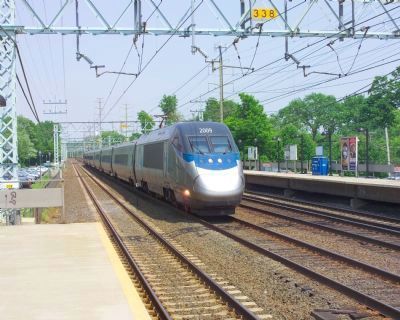The original Niagra Falls generators were designed for DC operations, not AC. That's why they were initially 25 Hz initially as AC generators.....for the exact same reason I gave before.....
Read
http://en.wikipedia.org/wiki/Utility_frequency for more information.
History
Many different power frequencies were used in the 19th century. Very early isolated AC generating schemes used
arbitrary frequencies based on convenience for steam engine, water turbine and electrical generator design. Frequencies between 16⅔ Hz and 133⅓ Hz were used on different systems. The proliferation of frequencies grew out of the rapid development of electrical machines in the period 1880 through 1900. In the early incandescent lighting period, single-phase AC was common and typical generators were 8-pole machines operated at 2000 RPM, giving a frequency of
133 cycles per second.
The oldest continuously-operating commercial hydroelectric power plant in the United States, at Mechanicville, New York, still produces electric power at
40 Hz and supplies power to the local 60 Hz transmission system through frequency changers.
Why 50 Hz?
The German company AEG (descended from a company founded by Edison in Germany) built the first German generating facility to run at 50 Hz, allegedly because 60 was not a preferred number. AEG's choice of 50 Hz is thought by some to relate to a more "metric-friendly" number than 60. At the time, AEG had a virtual monopoly and their standard spread to the rest of Europe. After observing flicker of lamps operated by the 40 Hz power transmitted by the Lauffen-Frankfurt link in 1891, AEG raised their standard frequency to 50 Hz in 1891.
Why 60 Hz?
Westinghouse Electric decided to standardize on a lower frequency to permit operation of both electric lighting and
induction motors on the same generating system. Although 50 Hz was suitable for both, in 1890 Westinghouse considered that existing arc-lighting equipment operated slightly better on 60 Hz, and so that frequency was chosen. Frequencies much below 50 Hz gave noticeable flicker of arc or incandescent lighting. The operation of Tesla's
induction motor required a lower frequency than the 133 Hz common for lighting systems in 1890. In 1893 General Electric Corporation, which was affiliated with AEG in Germany, built a generating project at Mill Creek, California using 50 Hz, but changed to 60 Hz a year later to maintain market share with the Westinghouse standard.
25 Hz origins
The first generators at the Niagara Falls project, built by Westinghouse in 1895, were 25 Hz because the turbine speed had already been set
before alternating current power transmission had been definitively selected. Westinghouse would have selected a low frequency of 30 Hz to drive motor loads, but the turbines for the project had already been specified at 250 RPM. The machines could have been made to deliver 16⅔ Hz power suitable for heavy commutator-type motors but the Westinghouse company objected that this would be undesirable for lighting, and suggested 33⅓ Hz. Eventually a compromise of 25 Hz, with 12 pole 250 RPM generators, was chosen. Because the Niagara project was so influential on electric power systems design, 25 Hz prevailed as the North American standard for low-frequency AC.
Standarization
As the 20th century continued, more power was produced at 60 Hz (North America) or 50 Hz (Europe and most of Asia). Standardization allowed international trade in electrical equipment. Much later,
the use of standard frequencies allowed interconection of power grids. It wasn't until after World War II with the advent of affordable electrical consumer goods that more uniform standards were enacted.
Stablility
Regulation of power system frequency for timekeeping accuracy was not commonplace until after 1926 and the invention of the electric clock driven by a synchronous motor. Network operators will regulate the daily average frequency so that clocks stay within a few seconds of correct time.
In practice the nominal frequency is raised or lowered by a specific percentage to maintain synchronization.
To add, 25 Hz in the NE USA was the standard low Hz power grid for high horsepower motors (Industral loads). That's just one reason why PRR chose 25 Hz to power the NE corridor 20 to 25 years after Niagara Falls generators existed. 60 Hz was the standard for lighting loads. Few Americans had heavy motors in their homes, therefore most Americans had 60 Hz power to their homes.
